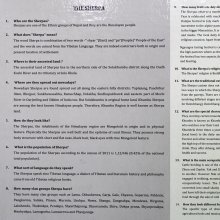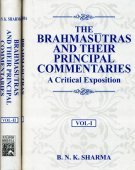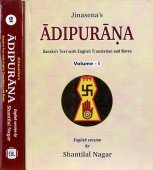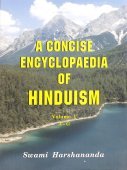Prana, Prāṇā, Prāṇa, Praṇa: 37 definitions
Introduction:
Prana means something in Buddhism, Pali, Hinduism, Sanskrit, Jainism, Prakrit, the history of ancient India, Marathi, Hindi. If you want to know the exact meaning, history, etymology or English translation of this term then check out the descriptions on this page. Add your comment or reference to a book if you want to contribute to this summary article.
Images (photo gallery)
In Hinduism
Shaivism (Shaiva philosophy)
Source: Wisdom Library: Kubjikāmata-tantraPrāṇā (प्राणा):—Third of the eight Mātṛs born from the body of Calanī, according to the Kubjikāmata-tantra. These eight sub-manifestations (mātṛ), including Prāṇā, symbolize a relation to the wind. Prāṇā itself represents prāṇa, one of the five vital airs. They are presided over by the Bhairava Asitāṅga. Calanī is the fifth of the Eight Mahāmātṛs, residing within the Mātṛcakra (third of the five cakras) and represents wind.
Source: archive.org: Vijnana Bhairava or Divine ConsciousnessPrāṇa (प्राण).—Indian thought believes that between the body and the mind or between the material or physical energy and mental energy, there is prāṇa which is an intermediary link between the two. The word prāṇa has been variously translated as the vital force, biological energy, bio-plasma, etc. According to Indian Philosophy, between the body and manas or mind, there is prāṇa which serves as a link between the two.
Prāṇa is not mind; it is insentient, but it is not like gross physical energy which catches the vibrations of the mind and transmits them to the nerves and plexuses and also physical vibrations to the mind. By cotnrolling the mind one can control the prāṇa, and by controlling the prāṇa, one can control the mind. According to Śaivāgama, prāṇa is not something alien to saṃvit or consciousness, but the first evolute of saṃvit (consciousness). In the process of creation saṃvit or consciousness is at first transformed into prāṇa. So prāṇa is a phase of consciousness itself.
The word prāṇa is thus used in three senses—
- in a general sense of prāṇa-śakti or life-force,
- in a specific sense according to the various biological functions,
- in the sense of breath.
Prāṇa (प्राण) refers to a basic unit of time and equals 24 seconds, while 60 prāṇas corresponds to 1 ghaṭikā/nāḍikā, equalling 24 minutes. The Arcanāṅgavidhi of Pūrvakāmikāgama first details the time measurement used before explaining the pūjā schedule. The Āgama divides a day into eight major time periods, further divided into smaller units. The smallest and most basic unit of time is one svāsa. Sixty svāsa constitute one prāṇa. Sixty prāṇa constitute one ghaṭikā. Calculation is made from sunrise. Seven and a half ghaṭikā is equal to one yāma. A day consists of eight yāma, or sixty ghaṭikā.
Source: Brill: Śaivism and the Tantric Traditions (philosophy)1) Prāṇa (प्राण) refers to the “essence (of ordinary human practice)”, according to the Īśvarapratyabhijñāvivṛtivimarśinī 2.131.—Accordingly, “[They] ‘consist in each other’ [means the following]: even the essence (prāṇa) of [ordinary human practice] such as buying and selling, etc., is nothing but such a manifesting consciousness. Only that which is manifest in such a way is for this very reason useful [in providing] to me, for whom [this thing is manifest and while I am] being manifest [myself], an efficacy which is [itself] necessarily manifest!”.
2) Prāṇa (प्राण) refers to “life-force” and represents of the four divisions of the Self, according to Kṣemarāja’s Pratyabhijñāhṛdaya (chapter 7-8).—Accordingly, the self is said to be four-fold: void, life-force (prāṇa), the subtle body consisting of the mind and its faculties, and the physical body. It is five-fold with the transindividual Power of Awareness that permeates the whole. In fact, it is not only cit that permeates the other levels: Kṣemarāja tells us that “it is clear that the very essence of each of these levels is the fact of its pervasion by all the loci of perception prior to it,” where “loci of perception” refers to these levels of embodiment as those realities with which contracted souls identify, and “prior to” means “more fundamental than
Source: Brill: Śaivism and the Tantric TraditionsPrāṇa (प्राण) or Vāyu refers to the “vital airs of the body”, according to the Brahmayāmala-tantra (or Picumata), an early 7th century Śaiva text consisting of twelve-thousand verses.—[The padmamālā-vidhi prescribes installing deities within series of nine, seven and eight lotuses].—While the Brahmayāmala does not treat the lotus garlands as fixtures of a subtle body, it does posit the existence of such structures: the body’s channels (nāḍī) and vital airs (vāyu, prāṇa), for instance, and more pertinently, points known as granthis (“knots” or “joints”). A particular series of nine granthis forms the locus for installing the nine lotuses of the primary padmamālā. That granthis were considered to be anatomical realities is suggested by their treatment as points in the body rather than as objects to be placed/installed in the body or engendered through meditation. [...]
Source: SOAS University of London: Protective Rites in the Netra TantraPrāṇa (प्राण) refers to the “vital energy” (of living beings), according to the Netratantra of Kṣemarāja: a Śaiva text from the 9th century in which Śiva (Bhairava) teaches Pārvatī topics such as metaphysics, cosmology, and soteriology.—Accordingly, [verse 22.14]—“Oṃ (praṇava) exists as the vital energy [i.e., life] (prāṇa) of living beings (prāṇin). It is established as that which keeps [living beings] alive. Praṇava enables [those beings] with all [their] parts. He [who knows this] shall know Śiva”.

Shaiva (शैव, śaiva) or Shaivism (śaivism) represents a tradition of Hinduism worshiping Shiva as the supreme being. Closely related to Shaktism, Shaiva literature includes a range of scriptures, including Tantras, while the root of this tradition may be traced back to the ancient Vedas.
Purana and Itihasa (epic history)
Source: archive.org: Puranic Encyclopedia1) Prāṇa (प्राण).—Grandson of sage Bhṛgu. Bhṛgu got of his wife Khyāti a daughter named Lakṣmī and two sons named Dhātā and Vidhātā. They married Āyati and Niyati respectively and they got two sons named Prāṇa and Mṛkaṇḍu. Mārkaṇḍeya was the son of Mṛkaṇḍu. (Chapter 10, Aṃśa 1, Viṣṇu Purāṇa).
2) Prāṇa (प्राण).—A son born to the Vasu named Soma of his wife Manoharā. This Prāṇa was the younger brother of Varccas. These brothers had two other brothers named Śiśira and Ramaṇa. (Śloka 26, Chapter 66, Ādi Parva).
3) Prāṇa (प्राण).—Prāṇavāyu. The wind of life. (See under Parāvaha).
Source: Cologne Digital Sanskrit Dictionaries: The Purana Index1a) Prāṇa (प्राण).—A son of Vidhātri and Niyatī (āyati-br. p.). His wife was Puṇḍarīkā and Dyutimān was his son.*
- * Bhāgavata-purāṇa IV. 1. 44-45; Brahmāṇḍa-purāṇa II. 11. 6-9, 40.
1b) A Vasu and a son of Dharma; married Ūrjasvatī. Father of Saha and two other sons.*
- * Bhāgavata-purāṇa VI. 6. 11-12; Viṣṇu-purāṇa I. 15. 113.
1c) A Bhārgava and a sage of the Svārociṣa epoch.*
- * Brahmāṇḍa-purāṇa II. 36. 17; Matsya-purāṇa 9. 8.
1d) A son of Dhara;1 a Sādhya.2
1e) A son of Angiras;1 a Sādhya;2 a Tuṣita;3 an Ajitadeva.4
- 1) Matsya-purāṇa 196. 2; Vāyu-purāṇa 65. 105.
- 2) Ib. 66. 15.
- 3) Brahmāṇḍa-purāṇa III. 3. 19; Vāyu-purāṇa 66. 18.
- 4) Ib. 67. 34.
1f) The antarātma; it is anna or food; anna is Brahmā, etc.; from this grows creatures. (cf. Upaniṣad; also Yajur Veda);1 one of the Vāyus which determine the karma of people;2 is jīva.3
1g) A son of Dhātṛ and father of Dyutimat.*
- * V. I. 10. 4-5.
1h) One of the seven seers of the Svārociṣa epoch.*
- * Viṣṇu-purāṇa III. 1. 11.
1) Prāṇa (प्राण) is the son of Āyati (son of Meru) and Dhātā: one of the three daughters of Bhṛgu and Khyāti: one of the twenty-four daughters of Dakṣa and Prasūti, according to the Vaṃśa (‘genealogical description’) of the 10th century Saurapurāṇa: one of the various Upapurāṇas depicting Śaivism.—Accordingly, From Bhṛgu through Khyāti, Lakṣmī (the beloved of Nārāyaṇa), Dhātā and Vidhātā were born. Dhātā and Vidhātā became the Sons-in-law of Meru marrying Āyati and Niyati respectively. Prāṇa was born form Dhātā and Mṛkaṇḍu was born from Vidhātā. Prāṇa had a son named Vedaśiras and the son of Mṛkaṇḍu was Mārkaṇḍeya.
2) Prāṇa (प्राण) is the name of one of the seven sages (saptarṣi) in the Svārociṣa-Manvantara: the second of the fourteen Manvantaras.—Accordingly, “In this second [Svārociṣa] Manvantara the deities are the Tuṣitas, Vipaścit is the name of the Indra, and Ūrja, Stambha, Prāṇa, Dānta, Ṛṣabha, Timira and Sārvarivān (Arvarīvān?) are the seven sages”.

The Purana (पुराण, purāṇas) refers to Sanskrit literature preserving ancient India’s vast cultural history, including historical legends, religious ceremonies, various arts and sciences. The eighteen mahapuranas total over 400,000 shlokas (metrical couplets) and date to at least several centuries BCE.
Ayurveda (science of life)
Source: Google Books: A Practical Approach to the Science of AyurvedaPrāṇa (प्राण).—One of the five upadoṣas (sub-functions) of vāta (one of the three biological humors).—
Location of prāṇa: Head, chest and brain.
Functions of prāṇa: Perceptions and movements of all kinds, respiratory activity, swallowing of food, conversion of breath into life-force, spitting and sneezing.
Ailments of prāṇa due to vitiation: Hiccoughs, cough, bronchial asthma, cold, sore throat and other respiratory complaints, giddiness, syncope and other neurological disorders.
Source: gurumukhi.ru: Ayurveda glossary of termsPrāṇa (प्राण):—1. Vitality. 2. Breath of life , 3. Spirit 4. Life

Āyurveda (आयुर्वेद, ayurveda) is a branch of Indian science dealing with medicine, herbalism, taxology, anatomy, surgery, alchemy and related topics. Traditional practice of Āyurveda in ancient India dates back to at least the first millenium BC. Literature is commonly written in Sanskrit using various poetic metres.
Vyakarana (Sanskrit grammar)
Source: Wikisource: A dictionary of Sanskrit grammarPrāṇa (प्राण).—Air, which is instrumental in producing sound; cf. वायुः प्राणः कण्ठ्यमनुप्र दानम् (vāyuḥ prāṇaḥ kaṇṭhyamanupra dānam) R.Pr.XIII.1.
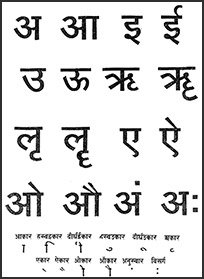
Vyakarana (व्याकरण, vyākaraṇa) refers to Sanskrit grammar and represents one of the six additional sciences (vedanga) to be studied along with the Vedas. Vyakarana concerns itself with the rules of Sanskrit grammar and linguistic analysis in order to establish the correct context of words and sentences.
Jyotisha (astronomy and astrology)
Source: Wisdom Library: Brihat Samhita by VarahamihiraPrāṇa (प्राण) refers to 4 seconds, according to the Bṛhatsaṃhitā (chapter 2), an encyclopedic Sanskrit work written by Varāhamihira mainly focusing on the science of ancient Indian astronomy astronomy (Jyotiṣa).—Accordingly, “We shall now proceed to give a brief description of (the qualifications of) a jyotiṣaka. [...] He must have a correct, knowledge of a yuga (43,20,000 Solar years), varṣa (a solar year), āyana (6 solar months), ṛtu (2 solar months), māsa (a solar month), pakṣa (15 solar days), ahorātra (a solar day), yama (one-eighth of a solar day), muhūrta (one-thirtieth of a solar day), nāḍī (one-sixtieth of a solar day or 24 minutes), vināḍi (one sixtieth of a nāḍī or 24 seconds), prāṇa (4 seconds) truṭi (33, 75th of a second) and parts of a truṭi and other divisions of time and also of divisions of space”.
Source: Wikibooks (hi): Sanskrit Technical TermsPrāṇa (प्राण).—Unit of time equal to four sidereal seconds or one-sixth of a vināḍikā. Note: Prāṇa is a Sanskrit technical term used in ancient Indian sciences such as Astronomy, Mathematics and Geometry.
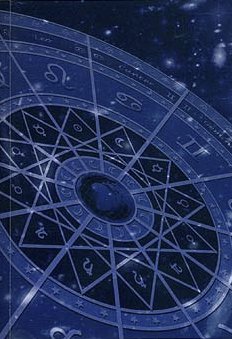
Jyotisha (ज्योतिष, jyotiṣa or jyotish) refers to ‘astronomy’ or “Vedic astrology” and represents the fifth of the six Vedangas (additional sciences to be studied along with the Vedas). Jyotisha concerns itself with the study and prediction of the movements of celestial bodies, in order to calculate the auspicious time for rituals and ceremonies.
Vaishnavism (Vaishava dharma)
Source: Pure Bhakti: Bhagavad-gita (4th edition)Prāṇa (प्राण) refers to “(1) Life energy; life-air (2) The in-coming breath (4.27)”. (cf. Glossary page from Śrīmad-Bhagavad-Gītā).
Source: Pure Bhakti: Brhad BhagavatamrtamPrāṇa (प्राण) refers to:—The life-energy; life-air; outgoing breath. (cf. Glossary page from Śrī Bṛhad-bhāgavatāmṛta).
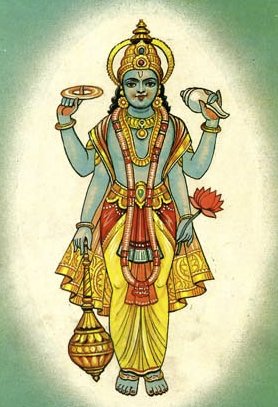
Vaishnava (वैष्णव, vaiṣṇava) or vaishnavism (vaiṣṇavism) represents a tradition of Hinduism worshipping Vishnu as the supreme Lord. Similar to the Shaktism and Shaivism traditions, Vaishnavism also developed as an individual movement, famous for its exposition of the dashavatara (‘ten avatars of Vishnu’).
Shaktism (Shakta philosophy)
Source: Google Books: Manthanabhairavatantram1) Prāṇa (प्राण) refers to the “vital breath”, according to the Śrīmatottara-tantra, an expansion of the Kubjikāmatatantra: the earliest popular and most authoritative Tantra of the Kubjikā cult.—Accordingly, as the God Bhairava said to the Goddess: “You are Power (śakti) and I am the individual soul called the vital breath (prāṇa) of living beings (prāṇin). The individual soul consists of Fire (i.e. power) and Air (breath) and is established in the Body of Kula [i.e., kulapiṇḍa]”.
2) Prāṇa (प्राण) or Prāṇagranthi refers to the “Knot of the Vital Breath (prāṇa)” and represents one of the “sixteen knots” (granthi), according to the Ṣaṭsāhasrasaṃhitā, an expansion of the Kubjikāmatatantra: the earliest popular and most authoritative Tantra of the Kubjikā cult.—Accordingly, “(1) The Knot called Ananta, which is HAṂSA, should be placed (on the body). It is at the middle toe of the sixteen parts (of the body).The Knot of Time is below the ankle. [...] (10) The Knot of the Sun is in the navel and (11) the one called the Vital Breath [i.e., prāṇa-granthi] is in its own place (that is, in the breath). [...]”.
The sixteen Knots [i.e., prāṇa-granthi] are parts of the goddess’s body. Accordingly, they are projected into the adept’s body to transform it into the Triple Fort, that is, the triangular body of the goddess replete with the energies of the sacred seats. She is both with form, consisting of the letters and mantras, and without form as the Transmental (manonmanī) energy of the god.
Source: Brill: Śaivism and the Tantric Traditions (shaktism)Prāṇa (प्राण) refers to the “vital functions” (of the body), according to the King Vatsarāja’s Pūjāstuti called the Kāmasiddhistuti (also Vāmakeśvarīstuti), guiding one through the worship of the Goddess Nityā.—Accordingly, “[...] O Goddess! With your energy the sun burns, the moon expands the immortal essence with his beams, and here in our body the vital functions glimmer (prāṇa—prāṇāstapanta iha) under the control of the vital air. For, without you none can function at all”.

Shakta (शाक्त, śākta) or Shaktism (śāktism) represents a tradition of Hinduism where the Goddess (Devi) is revered and worshipped. Shakta literature includes a range of scriptures, including various Agamas and Tantras, although its roots may be traced back to the Vedas.
Ganitashastra (Mathematics and Algebra)
Source: archive.org: Hindu MathematicsPrāṇa (प्राण) represents the number 5 (five) in the “word-numeral system” (bhūtasaṃkhyā), which was used in Sanskrit texts dealing with astronomy, mathematics, metrics, as well as in the dates of inscriptions and manuscripts in ancient Indian literature.—A system of expressing numbers by means of words arranged as in the place-value notation was developed and perfected in India in the early centuries of the Christian era. In this system the numerals [e.g., 5—prāṇa] are expressed by names of things, beings or concepts, which, naturally or in accordance with the teaching of the Śāstras, connote numbers.
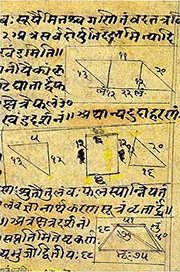
Ganitashastra (शिल्पशास्त्र, gaṇitaśāstra) refers to the ancient Indian science of mathematics, algebra, number theory, arithmetic, etc. Closely allied with astronomy, both were commonly taught and studied in universities, even since the 1st millennium BCE. Ganita-shastra also includes ritualistic math-books such as the Shulba-sutras.
General definition (in Hinduism)
Source: Yoga Magazine: PranaThe first prana is known as Prana. It is located between the diaphragm and the throat. This prana is an upward flowing force. It maintains the function of the lungs and heart, and is responsible for inhalation and exhalation, and for the swallowing and regurgitation of food. Although it is an upward moving force in general, it also has the ability to move downward in that region.
In Buddhism
Tibetan Buddhism (Vajrayana or tantric Buddhism)
Source: Brill: Śaivism and the Tantric Traditions (tantric Buddhism)Prāṇa (प्राण) refers to “vitality”, according to the Vimalaprabhā: an eleventh-century commentary on the Kālacakratantra.—The Vimalaprabhā explains the term haṭhayoga as the name of a type of yoga that forces prāṇa (‘vitality’) into the central channel through a practice involving nāda (‘internal resonance’) and retention of bindu (‘generative fluids’).

Tibetan Buddhism includes schools such as Nyingma, Kadampa, Kagyu and Gelug. Their primary canon of literature is divided in two broad categories: The Kangyur, which consists of Buddha’s words, and the Tengyur, which includes commentaries from various sources. Esotericism and tantra techniques (vajrayāna) are collected indepently.
In Jainism
General definition (in Jainism)
Source: Encyclopedia of Jainism: Tattvartha Sutra 5: The category of the non-livingPrāṇa (प्राण, “respiration”) according to the 2nd-century Tattvārthasūtra 5.19.—The function of matter (pudgala) is to form the basis of the body (śarīra), the organs of speech (vāc), the mind (manas) and the respiration (prāṇa). What is the meaning of life force (prāṇa)? The cause of the life or to exist in a particular realm is called prāṇa (breathe or respiration).

Jainism is an Indian religion of Dharma whose doctrine revolves around harmlessness (ahimsa) towards every living being. The two major branches (Digambara and Svetambara) of Jainism stimulate self-control (or, shramana, ‘self-reliance’) and spiritual development through a path of peace for the soul to progess to the ultimate goal.
India history and geography
Source: Cologne Digital Sanskrit Dictionaries: Indian Epigraphical GlossaryPrāṇa.—(CII 1), living being; same as prāṇin. (IE 7-1-2), ‘five’. Note: prāṇa is defined in the “Indian epigraphical glossary” as it can be found on ancient inscriptions commonly written in Sanskrit, Prakrit or Dravidian languages.

The history of India traces the identification of countries, villages, towns and other regions of India, as well as mythology, zoology, royal dynasties, rulers, tribes, local festivities and traditions and regional languages. Ancient India enjoyed religious freedom and encourages the path of Dharma, a concept common to Buddhism, Hinduism, and Jainism.
Languages of India and abroad
Marathi-English dictionary
Source: DDSA: The Molesworth Marathi and English Dictionaryprāṇa (प्राण).—m (S) A vital air. Five are enumerated, viz. prāṇa, apāna, vyāna, udāna, samāna. 2 The first of the five, used, from its seat in the lungs, preeminently, and expressing life or vitality. 3 fig. Anything dearly loved. 4 Breath, air inhaled. 5 Air or wind. For figurative senses, phrases, and applications of this word besides the few subjoined here see under jīva. ughaḍyā ḍōḷyānēṃ prāṇa jāta nāhīṃ One cannot die or rest in tranquility whilst his eyes are open (unto some iniquity or impropriety). prāṇa uraṇēṃ g. of s. To be but alive. prāṇa ōkaṇēṃ To indulge excessive sorrow. 2 To long after vehemently. prāṇa pl jāṇēṃ g. of s. To die. prāṇa ṭhēvaṇēṃ To set one's heart and affections upon. 2 Phrase. mī prāṇa ṭhēvaṇāra nāhīṃ I will not live. prāṇa dēṇēṃ To give up or resign one's life. prāṇa vāhaṇēṃ To devote one's self, soul and spirit, to the service of. Ex. prāṇa vāhilā pāyāvarī ||. prāṇa sōkhaṇēṃ g. of s. To be parched with thirst. 2 To long and pant for; to thirst after. prāṇa sōḍaṇēṃ To resign one's breath. prāṇācā vālhī Lord of one's life, viz. a husband. prāṇāpēkṣā kaṭhīṇa Worse than death. prāṇāśīṃ jāṇēṃ To lose life (through some violence or with prematureness).
Source: DDSA: The Aryabhusan school dictionary, Marathi-Englishprāṇa (प्राण).—m A vital air. Life. Anything dearly loved. Breath. Air. ughaḍyā ḍōḷyānē prāṇa jāta nāhīṃ One cannot rest in tranquillity whilst his eyes are open to some iniquity or impropriety. prāṇa uraṇēṃ To be just alive. prāṇa pl jāṇēṃ To die. prāṇa ṭhēvaṇēṃ To set one's heart and affections upon. mī prāṇa ṭhēvaṇāra nāhīṃ I will not live. prāṇa dēṇēṃ To give up or resign one's life. prāṇa vāhaṇēṃ To devote one's self or soul to the service of. prāṇa sōkhaṇēṃ To be parched with thirst. To thirst after. prāṇa sōḍaṇēṃ To resign one's breath. prāṇācā vālhī-lī Lord of one's life, viz. a husband. prāṇāpēkṣāṃ kaṭhīṇa Worse than death.
Marathi is an Indo-European language having over 70 million native speakers people in (predominantly) Maharashtra India. Marathi, like many other Indo-Aryan languages, evolved from early forms of Prakrit, which itself is a subset of Sanskrit, one of the most ancient languages of the world.
Sanskrit dictionary
Source: DDSA: The practical Sanskrit-English dictionaryPraṇa (प्रण).—a. Old, ancient.
--- OR ---
Praṇa (प्रण).—1 P.
1) To bow down, salute, make a low obeisance to, be humble (with acc. or dative); न प्रणमन्ति देवताभ्यः (na praṇamanti devatābhyaḥ) K.18; तां भक्तिप्रवणेन चेतसा प्रणनाम (tāṃ bhaktipravaṇena cetasā praṇanāma) K. 228; Kumārasambhava 7.27; तस्मात् प्रणम्य प्रणिधाय कायम् (tasmāt praṇamya praṇidhāya kāyam) Bhagavadgītā (Bombay) 11.44; R.2.21. (sāṣṭāṅgaṃ praṇam 'to fall down on the eight limbs'; see aṣṭāṅga; daṇḍavat praṇam 'to bow by throwing oneself down on the ground quite prostrate and flat like a stick placed horizontally, touching the ground at all points; cf. daṇḍapraṇāma.) -Caus. (praṇamayati) To cause to bow down; तामर्चिताभ्यः कुलदेवताभ्यः कुलप्रतिष्ठां प्रणमय्य माता (tāmarcitābhyaḥ kuladevatābhyaḥ kulapratiṣṭhāṃ praṇamayya mātā) Kumārasambhava 7.27.
2) To bend, incline.
Derivable forms: praṇam (प्रणम्).
--- OR ---
Prāṇa (प्राण).—1 Breath, respiration.
2) The breath of life, vitality, life, vital air, principle of life (usually pl. in this sense, the Prāṇas being five; prāṇa, apāna, samāna, vyāna and udāna); प्राणैरुपक्रोशमलीमसैर्वा (prāṇairupakrośamalīmasairvā) R.2.53;12.54; (hṛdi prāṇo gude'pānaḥ samāno nābhisaṃsthitaḥ | udānaḥ kaṇṭhadeśastho vyānaḥ sarvaśarīragaḥ ||).
3) The first of the five life-winds or vital airs (which has its seat in the lungs); अपाने जुह्वति प्राणं प्राणेऽपानं तथापरे । प्राणापानगती रुद्ध्वा प्राणायाम- परायणाः (apāne juhvati prāṇaṃ prāṇe'pānaṃ tathāpare | prāṇāpānagatī ruddhvā prāṇāyāma- parāyaṇāḥ) || Bhagavadgītā (Bombay) 4.29.
4) Wind, air inhaled.
5) Energy, vigour, strength, power; as in प्राणसार (prāṇasāra) q. v.; युद्धातिथ्यं प्रदास्यामि यथाप्राणं निशाचर (yuddhātithyaṃ pradāsyāmi yathāprāṇaṃ niśācara) Rām.3.5.28; Bhāgavata 8.2.29; सर्वप्राणप्रवणमघवन्मुक्तमाहत्य वक्षः (sarvaprāṇapravaṇamaghavanmuktamāhatya vakṣaḥ) Mv.1.45.
6) The spirit or soul (opp. śarīra).
7) The Supreme Spirit; इमानि भूतानि प्राणमेवाभिसंविशन्ति (imāni bhūtāni prāṇamevābhisaṃviśanti) Bṛ. Up.1.11.5.
8) An organ of sense; स्पृष्ट्वैतानशुचिर्नित्यमद्भिः प्राणानुपस्पृशेत् । गात्राणि चैव सर्वाणि नाभिं पाणितलेन तु (spṛṣṭvaitānaśucirnityamadbhiḥ prāṇānupaspṛśet | gātrāṇi caiva sarvāṇi nābhiṃ pāṇitalena tu) || Manusmṛti 4.143; मरीचिमिश्रा ऋषयः प्राणेभ्योऽहं च जज्ञिरे (marīcimiśrā ṛṣayaḥ prāṇebhyo'haṃ ca jajñire) Bhāgavata 1.6.31.
9) Any person or thing as dear and necessary as life, a beloved person or object; कोशः कोशवतः प्राणाः प्राणाः प्राणा न भूपतेः (kośaḥ kośavataḥ prāṇāḥ prāṇāḥ prāṇā na bhūpateḥ) H.2.9; अर्थपतेर्विमर्दको बहिश्चराः प्राणाः (arthapatervimardako bahiścarāḥ prāṇāḥ) Dk.
1) The life or essence of poetry, poetical talent or genius; inspiration.
11) Aspiration; as in महाप्राण (mahāprāṇa) or अल्पप्राण (alpaprāṇa) q. v.
12) Digestion.
13) A breath as a measure of time.
14) Gum-myrrh.
15) Life, living (jīvana); दैवं च दैवसंयुक्तं प्राणश्च प्राणदश्च ह । अपेक्षापूर्वकरणादशुभानां शुभं फलम् (daivaṃ ca daivasaṃyuktaṃ prāṇaśca prāṇadaśca ha | apekṣāpūrvakaraṇādaśubhānāṃ śubhaṃ phalam) || Mahābhārata (Bombay) 12.36.14.
16) Food (anna); अनस्तिकानां भूतानां प्राणदाः पितरश्च ये (anastikānāṃ bhūtānāṃ prāṇadāḥ pitaraśca ye) Mahābhārata (Bombay) 12.12.4.
17) Name of Brahmā, Viṣṇu and other gods.
Derivable forms: prāṇaḥ (प्राणः).
--- OR ---
Prāṇā (प्राणा).—f. Name of Garuḍa's mother-in-law; L. D. B.
Source: Cologne Digital Sanskrit Dictionaries: Edgerton Buddhist Hybrid Sanskrit DictionaryPrāṇa (प्राण).—m. (= Pali pāṇa; compare next; Sanskrit only prāṇin), (1) usually, living being, creature, in very inclusive sense: Saddharmapuṇḍarīka 27.15; Lalitavistara 394.19 (bahuprāṇakoṭyaḥ, all mss.); Mahāvastu i.3.3 (prāṇa-koṭīṣu); 13.14 (pīḍayanti bahu prāṇāṃ); 128.8 (prāṇāṃ jīvitād vyaparopayanti); 145.8; 247.1; ii.6.2 (verse, prāṇeṣu, for prāṇiṣu, same verse, i.202.5); (2) rarely, animal (excluding human and superhuman beings), see prāṇaka 2: ye te sthalacarāḥ prāṇā…sarvāṇi prāṇaka-(NB!)- jātīni samānetha…ye kecij jalacarā prāṇāḥ…sarva- bhūtehi yajñaṃ yajiṣyāmi Mahāvastu ii.95.9-11; note at end of this story, te sarve prāṇaka-jātīyo…osṛṣṭā 99.17; (3) once even more specifically of insects, = prāṇaka 3: niḥprāṇenodakena (Ārya-)Mañjuśrīmūlakalpa 37.19 (prose).
Source: Cologne Digital Sanskrit Dictionaries: Shabda-Sagara Sanskrit-English DictionaryPraṇa (प्रण).—mfn.
(-ṇaḥ-ṇā-ṇaṃ) Old, ancient. E. pra substituted for purāṇa, and na aff.
--- OR ---
Prāṇa (प्राण).—mfn.
(-ṇaḥ-ṇā-ṇaṃ) Full, replete, filled. m.
(-ṇaḥ) 1. Air inhaled, inspiration, breath. 2. Air, wind. 3. Life, vitality. 4. A vital organ or part. 5. Strength, power. 6. Myrrh. 7. Poetical talent or inspiration. 8. A name of Bramha. 9. A title of Bramha, the Supreme spirit. 10. An aspiration in the articulation of letters. m. plu.
(-ṇāḥ) The five vital airs or modes of inspiration and expiration collectively. E. pra before, an to breathe, aff. ghañ .
Source: Cologne Digital Sanskrit Dictionaries: Benfey Sanskrit-English DictionaryPrāṇa (प्राण).—i. e. pra-an + a, m. 1. Breath, [Vikramorvaśī, (ed. Bollensen.)] [distich] 1. 2. Air, wind. 3. A vital organ, [Mānavadharmaśāstra] 4, 143. 4. One of the five vital airs, [Vedāntasāra, (in my Chrestomathy.)] in
Prāṇa (प्राण).—[masculine] breath, [especially] vital breath, vitality; wind, [especially] one of the winds in the human body; [plural] life, the vital organs or organs of sensation.
Source: Cologne Digital Sanskrit Dictionaries: Monier-Williams Sanskrit-English Dictionary1) Praṇa (प्रण):—mfn. ([from] 1. pra) ancient, old, [Pāṇini 5-4, 30], [vArttika] 7, [Patañjali]
2) Prāṇa (प्राण):—[from prā] 1. prāṇa mfn. (for 2. See p. 705, col. 1.) filled, full, [cf. Lexicographers, esp. such as amarasiṃha, halāyudha, hemacandra, etc.]
3) [from prān] 2. prāṇa m. (ifc. f(ā). ; for 1. See under √prā, p.701) the breath of life, breath, respiration, spirit, vitality
4) [v.s. ...] [plural] life, [Ṛg-veda] etc. etc. (prāṇān with √muc or √hā or pari- √tyaj, ‘to resign or quit life’; with √rakṣ, ‘to save l°’; with ni-√han, ‘to destroy l°’; tvam me prāṇaḥ, ‘thou art to me as dear as l°’; often ifc.; cf. pati-, māna-pr)
5) [v.s. ...] a vital organ vital air (3 in number, viz. prāṇa, apāna and vyāna, [Aitareya-brāhmaṇa; Taittirīya-upaniṣad; Suśruta]; usually 5, viz. the preceding with sam-āna and, ud-āna, [Śatapatha-brāhmaṇa; Mahābhārata; Suśruta] etc. cf. [Monier-Williams’ Buddhism 242]; or with the other vital organs 6 [Śatapatha-brāhmaṇa]; or 7 [Atharva-veda; Brāhmaṇa; Muṇḍaka-upaniṣad]; or 9 [Atharva-veda; Taittirīya-saṃhitā; Brāhmaṇa]; or 10 [Śatapatha-brāhmaṇa]; [plural] the 5 organs of vitality or sensation, viz. prāṇa, vāc, cakṣus, śrotra, manas, collectively, [Chāndogya-upaniṣad ii, 7, i]; or = nose, mouth, eyes and ears, [Gopatha-brāhmaṇa; ???; Manu-smṛti iv, 143])
6) [v.s. ...] air inhaled, wind, [Atharva-veda; Śatapatha-brāhmaṇa]
7) [v.s. ...] breath (as a sign of strength), vigour, energy, power, [Mahābhārata; Rāmāyaṇa] etc. (sarvaprāṇena or -prāṇaiḥ, ‘with all one’s strength’ or ‘all one’s heart’; cf. yathā-prāṇam)
8) [v.s. ...] a breath (as a measure of time, or the t° requisite for the pronunciation of 10 long syllables = 1/6 Vināḍikā), [Varāha-mihira; Āryabhaṭa; Viṣṇu-purāṇa]
9) [v.s. ...] Name of a Kalpa (the 6th day in the light half of Brahmā’s month), [Purāṇa]
10) [v.s. ...] (in Sāṃkhya) the spirit (= puruṣa), [Tattvasamāsa]
11) [v.s. ...] (in Vedānta) the spirit identified with the totality of dreaming spirits, [Vedāntasāra; Religious Thought and Life in India 35] (cf. prāṇātman)
12) [v.s. ...] poetical inspiration, [Horace H. Wilson]
13) [v.s. ...] myrrh, [cf. Lexicographers, esp. such as amarasiṃha, halāyudha, hemacandra, etc.]
14) [v.s. ...] a Name of the letter y, [Upaniṣad]
15) [v.s. ...] of a Sāman, [Tāṇḍya-brāhmaṇa] (vasiṣṭhasya prāṇāpānau, [Ārṣeya-brāhmaṇa])
16) [v.s. ...] of Brahmā, [cf. Lexicographers, esp. such as amarasiṃha, halāyudha, hemacandra, etc.]
17) [v.s. ...] of Viṣṇu, [Religious Thought and Life in India 106]
18) [v.s. ...] of a Vasu, [Bhāgavata-purāṇa]
19) [v.s. ...] of a son of the Vasu Dhara, [Harivaṃśa]
20) [v.s. ...] of a Marut, [Yājñavalkya [Scholiast or Commentator]]
21) [v.s. ...] of a son of Dhātṛ, [Purāṇa]
22) [v.s. ...] of a son of Vidhātṛ, [Bhāgavata-purāṇa]
23) [v.s. ...] of a Ṛṣi in the 2nd Manv-antara, [Harivaṃśa]
Source: Cologne Digital Sanskrit Dictionaries: Yates Sanskrit-English Dictionary1) Praṇa (प्रण):—[pra-ṇa] (ṇṇaḥ-ṇṇā-ṇṇaṃ) a. Old, ancient.
2) Prāṇa (प्राण):—[prā+ṇa] (ṇaḥ) 1. m. Air inhaled; life,
Source: DDSA: Paia-sadda-mahannavo; a comprehensive Prakrit Hindi dictionary (S)Praṇa (प्रण) in the Sanskrit language is related to the Prakrit words: Paṇa, Pāṇa, Pāṇāma, Pāṇu.
[Sanskrit to German]
Sanskrit, also spelled संस्कृतम् (saṃskṛtam), is an ancient language of India commonly seen as the grandmother of the Indo-European language family (even English!). Closely allied with Prakrit and Pali, Sanskrit is more exhaustive in both grammar and terms and has the most extensive collection of literature in the world, greatly surpassing its sister-languages Greek and Latin.
Hindi dictionary
Source: DDSA: A practical Hindi-English dictionary1) Praṇa (प्रण) [Also spelled pran]:—(nm) a vow, pledge; —[karanā] to take a vow, to (take a) pledge; —[pālana karanā/—pūrā karanā/—rakhanā ] to keep a pledge, to observe a vow.
2) Prāṇa (प्राण) [Also spelled pran]:—(nf) life; vital breath, vital air; vitality; soul, spirit; sweetheart; (in Gram.) aspiration in the articulation of letters; -[ādhāra] sweetheart; life-breath; source of sustenance; ~[kara] animating, life-giving, that which infuses life or inspires; ~[kaṣṭa] mortal agony; pain of death; ~[ghāta] killing; assassination; murder; ~[ghātaka] fatal; causing destruction of life; killing; -[tyāga] abandonment of life; resigning of life; expiry, death; -[daṃḍa] capital punishment, punishment of death; ~[da/dāyī] infusing/injecting life, animating, enlivening; ~[dātā] life-giver; one who saves somebody’s life; ~[dāna] a gift of life; saving/sparing somebody’s life; ~[dhana] as dear as life; beloved; ~[dhārī] a living being/organism, a creature; ~[nātha] lord/master of life; husband; ~[nāśa] destruction of life; killing; ~[nāśaka] destroyer of life; mortal, deadly; ~[pati] see ~[nātha; ~pyārā] dear (to soul), beloved, sweetheart; hence ~[pyārī] (nf); ~[pratiṣṭhā] infusion/injectment of life; ceremony of consecrating an idol; ~[prada] life-giving, infusing or imparting life; ~[priya] see ~[pyārā; -bhaya] fear of life; risk of life; ~[maya] full of vitality; endowed with breath of life; a living being; कोश•[ ] the vital or organic case; ~[mūlaka] vital; essential to or concerned with life; ~[mūlakatāvāda] vitalism; vital part of the body; ~[vāyu] vital breath; ~[śakti] vitality; -[saṃśaya] risk of life, fear of life; ~[sama] as dear as life; beloved; ~[hara/hārī] mortal, deadly; causing the end of life; ~[hāni] loss of life; ~[hīna] lifeless, inanimate; —[ānā] to feel relieved of a scare/fear; —[uḍa jānā] to be mortally scared/frightened; to get terribly panicky;—[oṭhoṃ taka ānā] see —[mūṃha ko ānā; —kaṃṭha meṃ ānā] to be mortally afflicted; to be on the verge of death; to be in a frightful suspense; —[kā gāhaka] a seeker after one’s life, destroyer of life; mortally oppressive person; —[gale taka ānā] to be on the verge of death; death to be imminent; to be in a terrible suspense; —[chūṭanā/jānā/nikalanā] the breath to flit or leave the system; to expire, to die; the life to come to an end; —[choḍanā/tyāganā] to abandon life; to expire, to die; —[ḍālanā] to infuse/inject life, to animate; —[denā] to die, to give up life; to love more dearly than life; —[nikalanā] to die, life to cease to exist; -[pakherū uḍa jānā] to kick the bucket, to expire; —[phūṃkanā] to inject life into, to cause to revive; —[bacānā] to save somebody’s life; to get rid of, to evade persecution/painful confrontation; —[muṃha ko] [ānā] to suffer mortal agony; to be in a frightful suspense; —[muṭṭhī meṃ/hathelī para liye phiranā] to be ever-ready to court death; to face all sorts of risks; —[lenā] to kill; to tease/persecute to death; —[sūkhanā] to be in a frightful suspense; [prāṇoṃ se bhī pyārā] dearer than one’s own life, all in all, very very dear; [prāṇoṃ se hātha dhonā] to lose life, to be pushed out of existence; [prāṇoṃ para ā bananā] to be under a risk of life; to be confronted with mortal agony; [prāṇoṃ para khelanā/khela jānā] to risk/stake one’s life.
...
Kannada-English dictionary
Source: Alar: Kannada-English corpusPrāṇa (ಪ್ರಾಣ):—
1) [noun] the process of taking air into the lungs and letting it out; an inhaling and exhaling.
2) [noun] the air inhaled by living beings.
3) [noun] the entity in living beings distinct from the physical body and experiences and carries out all the functions of the body.
4) [noun] food, the essential thing for the survival of all living beings.
5) [noun] physical strength of a living being.
6) [noun] one of the five vital winds in the human body.
7) [noun] the Supreme Being.
8) [noun] the plant Cocotrine aloes, given to a woman in child-birth.
9) [noun] (fig.) the most loved thing or a beloved person.
10) [noun] ಪ್ರಾಣ ಕಳೆದುಕೊಳ್ಳು [prana kaledukollu] prāṇa kḷedukoḷḷu to end one’s life; to commit suicide; ಪ್ರಾಣಕ್ಕೆ ಬರು [pranakke baru] prāṇakke baru (fig.) (a very difficult situation) to arise; ಪ್ರಾಣ ತಿನ್ನು [prana tinnu] prāṇa tinnu to annoy or bother persistently or repeatedly; 2. to compel unreasonably and persistently; ಪ್ರಾಣ ಹಿಂಡು [prana himdu] prāṇa hiṇḍu = ಪ್ರಾಣ ತಿನ್ನು [prana tinnu]; ಪ್ರಾಣ ಹಿಡಿ [prana hidi] prāṇa hiḍi (fig.) to hold one’s life tenaciously (for a purpose, despite odds and difficulties); ಪ್ರಾಣ ಹೋಗು [prana hogu] prāṇa hōgu (death) to occur; 2. (fig.) to experience great pain, agony or to undergo severe embarrassment.
Kannada is a Dravidian language (as opposed to the Indo-European language family) mainly spoken in the southwestern region of India.
See also (Relevant definitions)
Starts with (+462): Praanantak, Praanapan, Prajanana, Prana Vayu Mudra, Prana-dakshinya, Prana-pratishta, Prana-sameta, Pranabadha, Pranabadhe, Pranabh, Pranabhaj, Pranabhaksha, Pranabhaksham, Pranabharana, Pranabhasvant, Pranabhasvat, Pranabhatvat, Pranabhaya, Pranabhisara, Pranabhrit.
Ends with (+51): Alpabalaprana, Alpaprana, Anaprana, Annagataprana, Annamayaprana, Antah-prana, Antahprana, Apetaprana, Apiprana, Aprana, Ardhaprana, Asthigata-prana, Bahih-prana, Bahishprana, Balaprana, Bhuvanaprana, Dashaprana, Dattaprana, Dirghaprana, Gataprana.
Full-text (+816): Pana, Pranapana, Pranayama, Pranabadha, Pranadhinatha, Prananatha, Pranaparigraha, Pranaprada, Pranasadman, Pranaharin, Manjuprana, Pranaharaka, Pancaprana, Vasuprana, Pranarodha, Pranamaya, Jagatprana, Kathaprana, Pranapaharin, Patiprana.
Relevant text
Search found 194 books and stories containing Prana, Prāṇā, Prāṇa, Praṇa, Pra-na, Pra-ṇa, Prāna; (plurals include: Pranas, Prāṇās, Prāṇas, Praṇas, nas, ṇas, Prānas). You can also click to the full overview containing English textual excerpts. Below are direct links for the most relevant articles:
Mundaka Upanishad with Shankara’s Commentary (by S. Sitarama Sastri)
Verse 2.1.8 < [Mundaka II, Khanda I]
Verse 3.1.9 < [Mundaka III, Khanda I]
Verse 2.1.2 < [Mundaka II, Khanda I]
Chandogya Upanishad (Madhva commentary) (by Srisa Chandra Vasu)
First Adhyaya, Second Khanda (14 mantras)
Seventh Adhyaya, Fifteenth through Twenty-sixth Khandas (18 mantras)
Brahma Sutras (Shankara Bhashya) (by Swami Vireshwarananda)
Chapter I, Section I, Adhikarana IX < [Section I]
Chapter II, Section IV, Adhikarana I < [Section IV]
Chapter IV, Section II, Adhikarana III < [Section II]
Kena upanishad (Madhva commentary) (by Srisa Chandra Vasu)
Mantra 1.8 < [Book 1 - Prathama-Khaṇḍa]
Mantra 1.2 < [Book 1 - Prathama-Khaṇḍa]
Mantra 1.1 < [Book 1 - Prathama-Khaṇḍa]
Cidgaganacandrika (study) (by S. Mahalakshmi)
Verse 87 [Śakterādya, Parināma, Prānā] < [Chapter 3 - Third Vimarśa]
Verse 158 [Prāṇā Haṃsa is Prathamaspanda] < [Chapter 3 - Third Vimarśa]
Verse 70 [Pralayāgni] < [Chapter 2 - Second Vimarśa]
Taittiriya Upanishad Bhashya Vartika (by R. Balasubramanian)
Verse 2.282 < [Book 2 - Brahmavallī]
Verse 2.160 < [Book 2 - Brahmavallī]
Verse 3.50 < [Book 3 - Bhṛguvallī]
Related products
